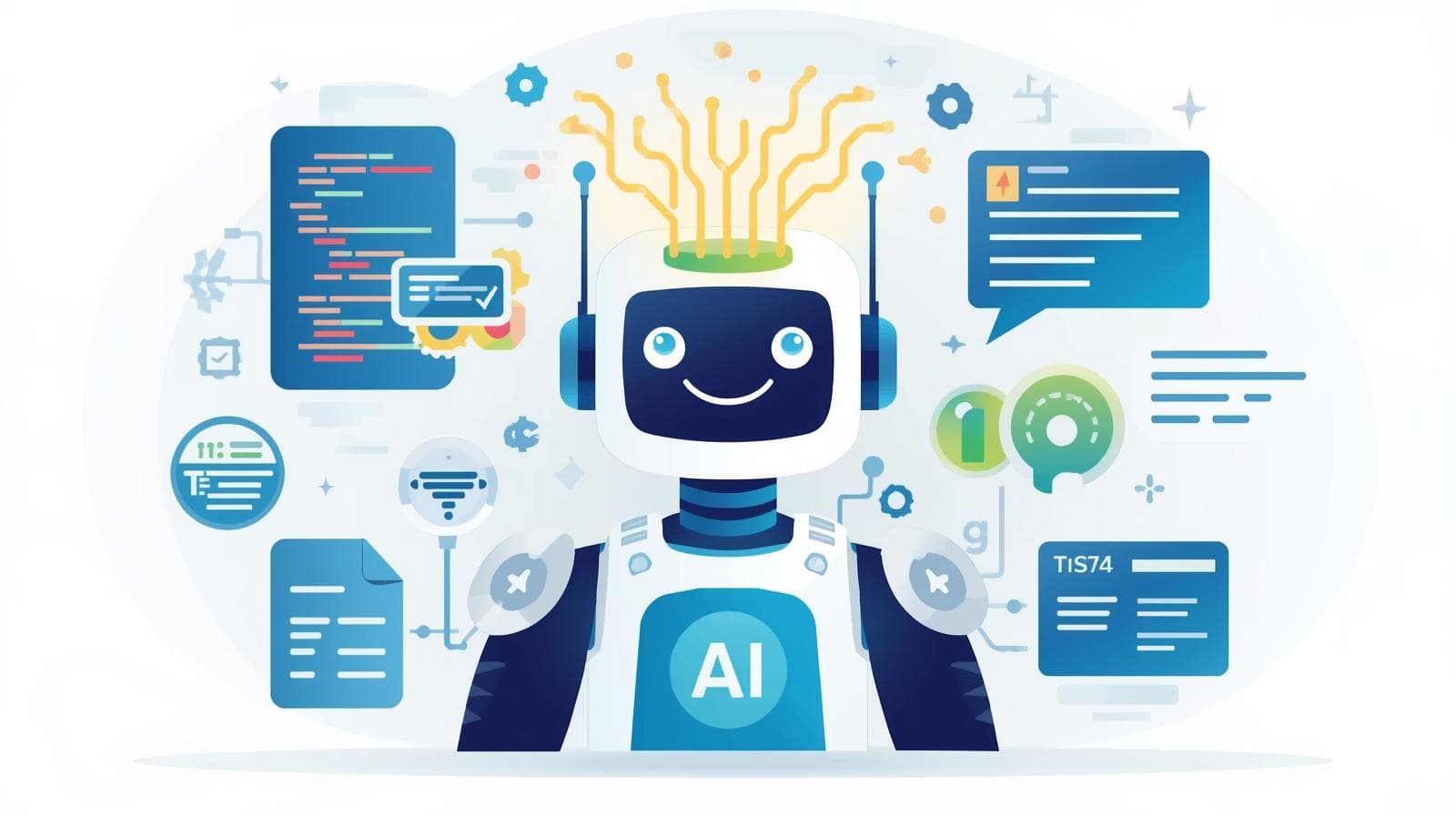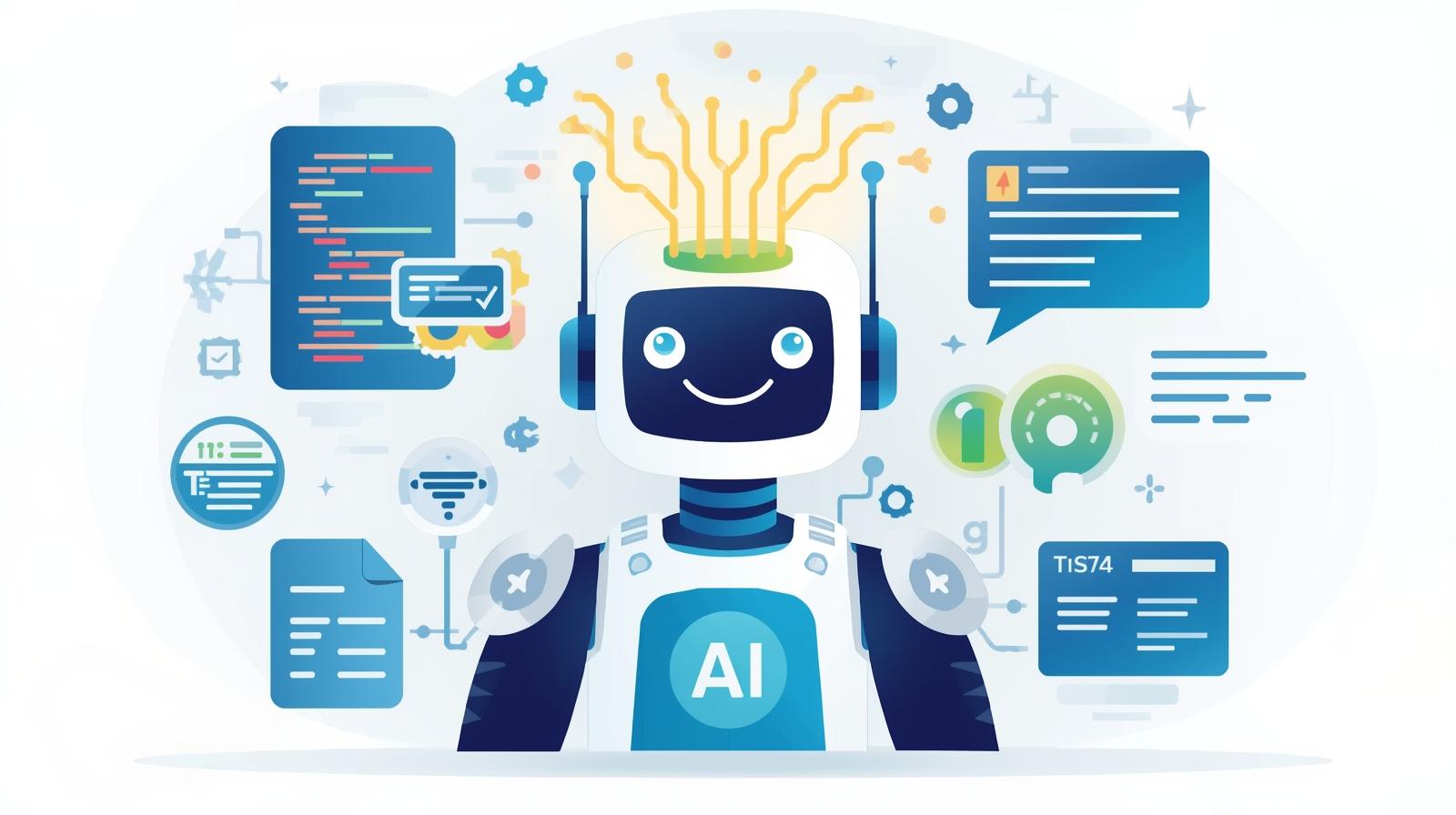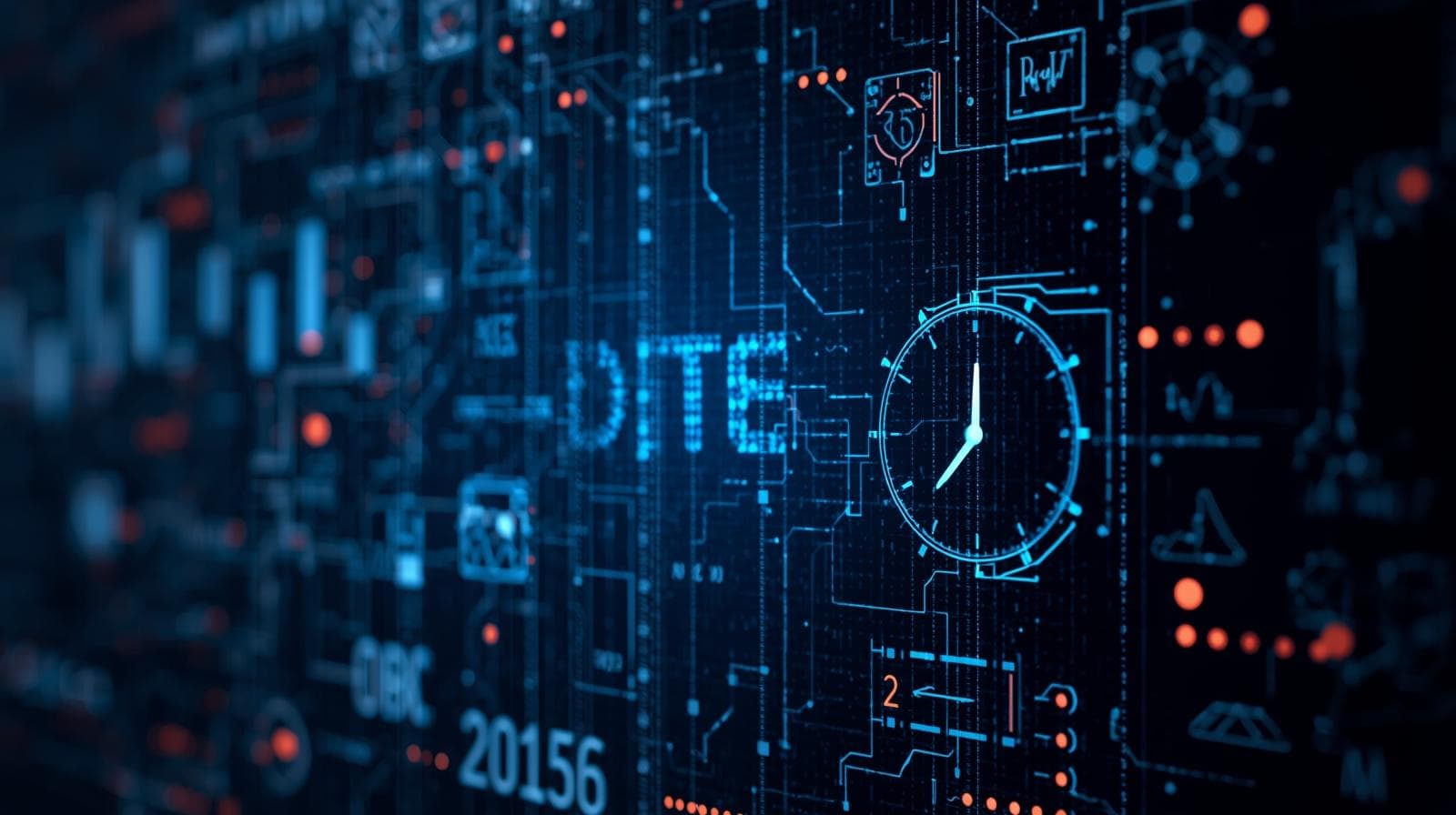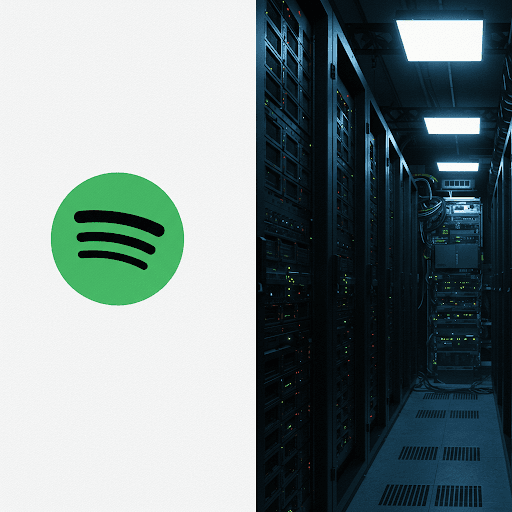Generative AI in IT: Revolutionizing Code, Cloud, & Cybersecurity

Explore how Generative AI is transforming the IT industry. Dive into real-world use cases in coding, DevOps, cybersecurity & more.

Generative AI in IT: Revolutionizing Code, Cloud, & Cybersecurity
Generative AI in the IT Industry: Beyond the Hype, Into the Future
If you work in IT, you’ve felt the tremor. It’s in the Slack channels, the conference keynotes, and the commit messages in your repository. It’s the colleague who just built a complex data parser in minutes, the security analyst who flagged a novel zero-day exploit before it was exploited, and the DevOps engineer who optimized a cloud infrastructure bill by 30% without manual intervention.
The common thread? Generative AI.
This isn't just another tech buzzword destined for the graveyard of forgotten trends. Generative AI represents a fundamental shift in how we conceive, build, and manage technology. It’s moving from being a tool we use to a collaborator we work with. But what does it actually do? Is it a threat to your job, or the most powerful assistant you’ll ever have?
In this deep dive, we’ll move beyond the hype and explore the concrete, transformative impact of Generative AI on the IT industry. We’ll look at what it is, how it’s being used today from code generation to cybersecurity, and what best practices you need to adopt to thrive in this new era.
What Exactly is Generative AI? Demystifying the Magic
Let’s start with the basics. Traditional AI is fantastic at analysis. It can look at a million cat pictures and learn to identify a cat (a process called discriminative modeling). It can predict your next purchase, recommend a movie, or detect fraud by recognizing patterns in existing data.
Generative AI flips the script. Instead of just analyzing data, it creates new data. It’s a subset of AI that learns the patterns and structure of its input data—whether that’s text, code, images, or sound—and then generates brand-new, original content that is convincingly similar.
Think of it like this:
Traditional AI (Discriminative): "Is this a picture of a cat?" (Answer: Yes/No)
Generative AI: "Draw me a picture of a cat wearing a tiny hat, reading a newspaper." (It generates a new image from the description)
The engine behind most modern Generative AI is a type of deep learning model called a Large Language Model (LLM). Models like OpenAI's GPT-4, Google's Gemini, and Meta's Llama are trained on a colossal corpus of text and code from the internet. They learn the statistical relationships between words, sentences, and concepts. When you give them a prompt, they predict the most probable next word, then the next, and so on, crafting coherent and contextually relevant responses.
This ability to understand and generate human-like text and code is what makes it so revolutionary for the IT world.
The Generative AI Toolbox: Key Technologies Powering the Change
Before we see them in action, it's helpful to know the key players:
Large Language Models (LLMs): The workhorses. They process and generate text. Examples: GPT-4, Claude, Llama.
Code-Specific Models: LLMs fine-tuned exclusively on codebases from GitHub, Stack Overflow, and other sources. They "understand" programming languages, syntax, and even intent. Examples: GitHub Copilot (powered by OpenAI's Codex), CodeT5, StarCoder.
Multimodal Models: These can understand and generate across different types of data, like text and images. Example: Asking Gemini to "create a website mockup for a sustainable coffee shop and then write the HTML/CSS for it."
Generative Adversarial Networks (GANs): Less used for code but brilliant for creating synthetic data. For instance, generating fake user profiles for software testing without compromising real user privacy.
Generative AI in Action: Real-World Use Cases in IT
This is where the abstract becomes tangible. Let's break down how Generative AI is permeating every corner of the IT landscape.
1. Software Development & Coding: The AI Pair Programmer
This is the most visible and adopted application. Tools like GitHub Copilot, Amazon CodeWhisperer, and Tabnine have become integrated into developers' IDEs (Integrated Development Environments).
Code Completion & Generation: You start typing a function, and the AI suggests the next several lines. You write a comment like
// function to sort users by last login date, and it generates the complete code for you.Boilerplate Code & Template Generation: Stop writing the same repetitive code for setting up a new React component, a Django model, or an API endpoint. AI can generate it instantly, freeing you to work on complex business logic.
Code Translation & Modernization: Need to port a legacy Python 2 script to Python 3? Or translate a simple app from Java to Go? Generative AI can handle the bulk of this tedious work, significantly accelerating modernization projects.
Documentation & Commenting: The most hated task becomes trivial. AI can analyze a complex function and generate clear, concise comments and documentation. It can also create README files and API documentation from your codebase.
Debugging and Explanation: Stuck on an error message? Paste it into a ChatGPT window, and it will not only explain the error in plain English but often suggest the exact fix. It can also explain what a piece of unfamiliar, convoluted code is actually doing.
To truly leverage these AI-powered coding tools, a strong foundational knowledge is key. To learn professional software development courses such as Python Programming, Full Stack Development, and MERN Stack, visit and enroll today at codercrafter.in. Our courses are designed to make you not just a coder, but an engineer who can effectively collaborate with AI to build amazing things.
2. DevOps & Cloud Operations (AIOps)
Generative AI is bringing unprecedented levels of automation and intelligence to operations.
Log Analysis and Anomaly Detection: Sifting through terabytes of log files to find the root cause of an incident is a nightmare. AI can analyze logs in real-time, identify patterns, pinpoint anomalies, and summarize the incident's cause in a clear, human-readable report.
Automated Incident Response: Beyond just finding the problem, AI can suggest remediation steps or even automatically execute runbooks to mitigate issues, reducing Mean Time to Resolution (MTTR) from hours to seconds.
Infrastructure as Code (IaC) Generation: Describe your desired cloud infrastructure in plain English: "Set up a VPC with two private subnets, a public subnet, a NAT gateway, and an auto-scaling group of EC2 instances behind an application load balancer." The AI can generate the Terraform or AWS CloudFormation template for you.
Performance Optimization: AI can analyze system performance metrics and suggest specific optimizations—e.g., "Increase the memory allocation for this Lambda function" or "Add an index to this database column to speed up the query."
3. Cybersecurity: The AI Sentinel
The attack surface is expanding, and threats are evolving too fast for humans alone. Generative AI is becoming a force multiplier for security teams.
Threat Detection and Intelligence: AI models can analyze network traffic, user behavior, and global threat feeds to detect sophisticated, previously unknown attacks (zero-days) that would bypass traditional signature-based tools.
Vulnerability Management: It can automatically scan code for known vulnerabilities (like those in the OWASP Top 10) and suggest patches. It can also prioritize vulnerabilities based on real-world exploitability and context, saving analysts from alert fatigue.
Phishing and Fraud Detection: Generative AI can analyze emails and messages to identify sophisticated phishing attempts that mimic human writing styles more effectively than older rule-based systems.
Security Code Review: It can act as an automated security auditor, reviewing code commits for potential security missteps like hardcoded secrets, SQL injection possibilities, or insecure API endpoints.
4. Data Management and Analytics
Synthetic Data Generation: For testing and development, you often need realistic but fake data. AI can generate high-quality, statistically sound synthetic data that preserves privacy (a concept known as differential privacy).
SQL Query Generation: Analysts and engineers can ask questions in natural language: "What was the total revenue from returning customers in Q4 2023?" and the AI can generate the complex SQL query to pull that data.
Data Summarization and Reporting: Need a summary of last quarter's key metrics? AI can analyze datasets and generate written reports, highlighting trends, outliers, and key insights.
5. IT Support and Service Management
AI-Powered Chatbots: Moving far beyond clunky, menu-driven bots, generative AI can power chatbots that understand complex user issues, query knowledge bases, and provide nuanced, helpful answers, deflecting a significant number of tier-1 support tickets.
Automated Ticket Triage and Resolution: AI can read incoming support tickets, categorize them, assign priority, suggest solutions from past tickets, and even draft the first response for a human agent to approve.
Best Practices for Adopting Generative AI in IT
This power doesn't come without responsibility. Blindly trusting AI can lead to disaster. Here’s how to integrate it wisely:
Treat it as a Junior Developer, Not a Senior Architect: The AI is a brilliant autocomplete, not an omniscient oracle. You are the senior architect. You must review, test, and understand every line of code it generates. It can be confidently wrong.
Security and Privacy are Paramount: Never paste sensitive information, proprietary code, API keys, or customer data into a public Generative AI tool. Assume all inputs are used for training and could be exposed. Use on-premises or private cloud versions of these tools for enterprise work.
Validate and Test Everything: AI-generated code may have security vulnerabilities, bugs, or be built on outdated libraries. Rigorous testing and validation are non-negotiable.
Focus on Upskilling, Not Replacing: The goal is to automate the boring stuff (boilerplate, debugging, documentation) so your team can focus on high-value tasks: architecture, complex problem-solving, and innovation. Invest in training your team to work effectively with these new tools.
Establish Clear Governance: Create organizational policies on the approved use of Generative AI. Which tools are allowed? For what purposes? What data can and cannot be used? This prevents shadow IT and mitigates risk.
Frequently Asked Questions (FAQs)
Q: Will Generative AI replace software developers?
A: No. It will replace developers who don't use Generative AI. It automates tasks, not jobs. The role of the developer will shift from writing every line of code to being a conductor—defining problems, designing systems, curating AI-generated code, and ensuring quality. Creativity, critical thinking, and architectural skills are more valuable than ever.
Q: What are the biggest risks?
A: The main risks are:
Code Quality & Security: Introduction of bugs or vulnerabilities.
Intellectual Property: Legal ambiguity around who owns AI-generated code.
Bias: Models trained on public data can inherit biases and generate flawed or discriminatory code.
Over-Reliance: Erosion of fundamental skills if developers become too dependent.
Q: How do I get started as a developer?
A: Start small! Install GitHub Copilot or use a free tier of an AI coding assistant. Use it for writing tests, generating documentation, or explaining errors. The best way to learn its capabilities and limitations is through hands-on experimentation. Building a strong core understanding of programming principles is essential to guide the AI effectively. To build that robust foundation, consider exploring the comprehensive courses at codercrafter.in.
Q: Are there open-source alternatives to commercial models?
A: Yes! Models like Meta's Llama 2, Mistral AI's models, and others are powerful open-source alternatives that can be run on your own infrastructure, alleviating many data privacy concerns.
Conclusion: The Future is a Collaboration
Generative AI is not a fleeting trend; it's a tectonic shift in the IT industry's foundation. It's democratizing expertise, accelerating development cycles, and unlocking new levels of efficiency and innovation. The future of IT isn't about humans versus machines; it's about humans with machines.
The most successful IT professionals and organizations will be those who embrace this technology thoughtfully, mitigate its risks, and harness its power to amplify their own creativity and problem-solving skills. They will be the ones who learn to ask the right questions, to prompt effectively, and to oversee the output with a critical and skilled eye.
The journey to mastering this new paradigm starts with a solid grasp of the fundamentals. Whether you're a student, a career-changer, or a seasoned professional looking to upskill, understanding how to code and design systems is the prerequisite to effectively partnering with AI.
Ready to future-proof your career and become an AI-augmented developer? To learn professional software development courses such as Python Programming, Full Stack Development, and MERN Stack, visit and enroll today at codercrafter.in. Let's build the future, together.









